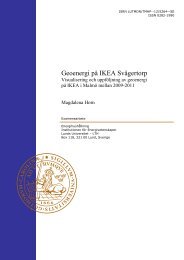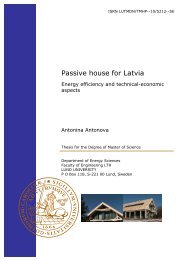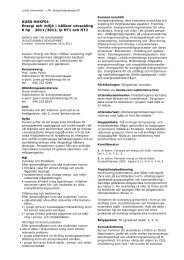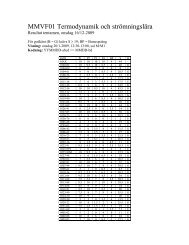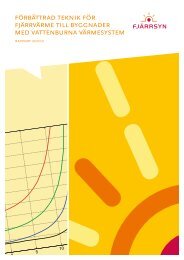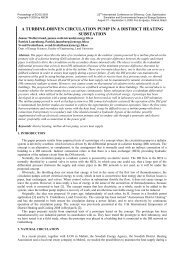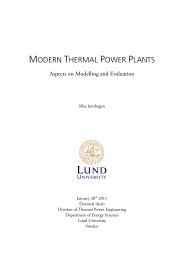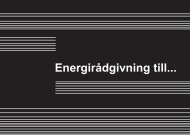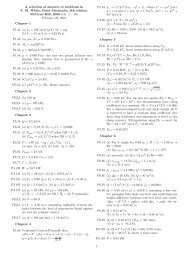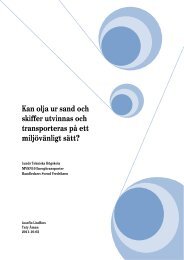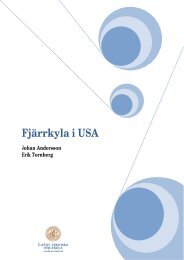Energy Consumption in Tertiary Buildings in Sweden - Case-study
Energy Consumption in Tertiary Buildings in Sweden - Case-study
Energy Consumption in Tertiary Buildings in Sweden - Case-study
Create successful ePaper yourself
Turn your PDF publications into a flip-book with our unique Google optimized e-Paper software.
With more than 14000 kWh per-capita of electricity consumption, <strong>Sweden</strong> is<br />
one of the countries with highest electricity consumption <strong>in</strong> the world. Only Iceland,<br />
Norway, Canada and F<strong>in</strong>land have a higher ratio. Compar<strong>in</strong>g to EU-27 average, <strong>Sweden</strong><br />
uses more than the double of electricity per capita. This is undoubtedly due to the cold<br />
climate. However, other factors such as historically low electricity prices and a high<br />
proportion of electricity-<strong>in</strong>tensive <strong>in</strong>dustries contribute to this fact (S.E.A. 2010).<br />
Service sector represents, with 43.23 TWh, the 13.4% of the Swedish energy<br />
consumption. This is almost as much as the total energy consumption of a country like<br />
Latvia. Therefore it’s important to <strong>study</strong> this sector to get a general overview on how<br />
energy is used <strong>in</strong> order to apply the most effective sav<strong>in</strong>g measures.<br />
Objectives<br />
The aim of this report was to <strong>study</strong> the fieldofenergybehaviour<strong>in</strong>servicesector.<br />
In order to achieve it, the research was divided <strong>in</strong>to three ma<strong>in</strong> parts:<br />
The first goal of the project was to create an energy profile of the consumer as<br />
well as <strong>study</strong> the f<strong>in</strong>al energy use <strong>in</strong> order to decide where and how energy sav<strong>in</strong>g<br />
measures should be implemented to be more effective.<br />
Secondly, it was important to evaluate the potential of energy sav<strong>in</strong>gs due to<br />
user habits at M-buil<strong>in</strong>g at Lund University – LTH.<br />
F<strong>in</strong>ally, the last objective was to apply different measures to achieve energy<br />
sav<strong>in</strong>gs by a change <strong>in</strong> behaviour and <strong>study</strong> the effectiveness of those measures.<br />
2




